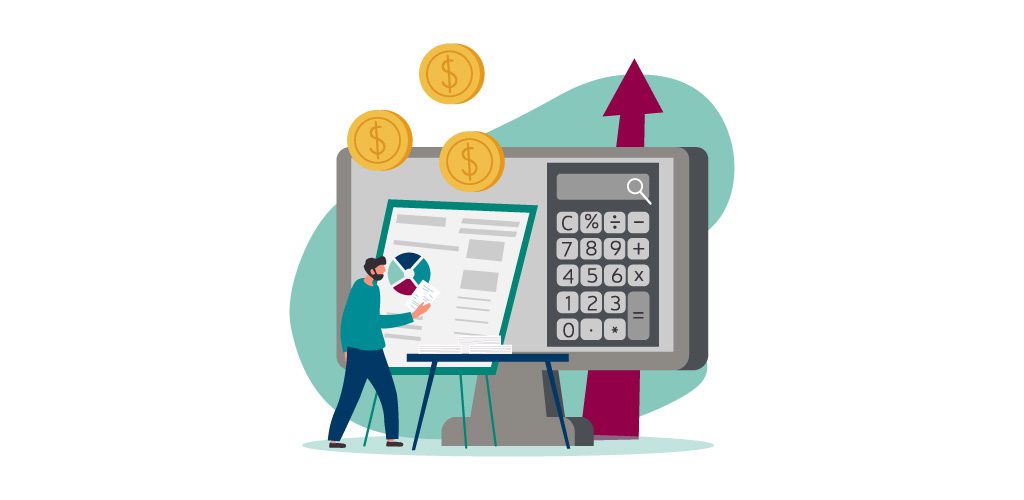The Guide to Variance Analysis in the Month-End Close
Blog post
Share
Balance sheet variance analysis is the act of comparing the current period’s balances with a previous period, such as the same period from the previous fiscal year. The balances from the two periods are compared and the difference (variance) between the two is then calculated and displayed, usually as both a dollar amount and a percentage. This variance is then compared with standard thresholds that are set by each company and can differ according to their size.
Using percentage and dollar amount thresholds allows a company to quickly identify the accounts which have the greatest variance so that they can get to work explaining why the balances changed so much in those accounts between periods. Usually, a comment is left in relation to the account, explaining the reason for the variance, and the reconciliation is certified as normal.
Benefits of Conducting Variance Analysis
The advantage of conducting variance analysis is that it ensures that any inconsistent trends in balance fluctuation are caught and explained; these explanations are key for internal efficiency and for internal and external auditing. Auditors will ask why there were material shifts in the balance of an account, and if the explanation is not easily accessible, the auditor may start to doubt the legitimacy of other information that a company is presenting. Each company will have different definitions of what a material shift in balance is, but the important thing is that there is an easy method for catching accounts in those situations and putting controls in place that require explanations for them.

Currently, many companies conduct variance analysis in 3rd-Party reporting tools, such as spreadsheets, which can be great tools for calculations and data investigation.
However, in this case, they do not facilitate the best practices for variance analysis, such as providing additional levels of workflow and control.
For example, let’s say a variance exceeded a threshold defined by the company and needed to be analyzed. Most reporting tools do not incorporate an automated workflow system that assigns an individual to investigate that variance. While many reporting tools have the option for comments, there is no way to tie that comment back into the certification process and to require that a comment be made before the user can submit the reconciliation. Exporting data certainly has its place and can be very helpful for certain tasks. However, in this case, why take the data out when the analysis can be performed right then and there?
Variance Analysis in Adra® Balancer
By using reconciliation software, such as Adra® Balancer, users can now conduct their variance analysis right alongside their reconciliations and other close activity. Adra Balancer now enables users to set thresholds by dollar amount and percentage, to flag accounts in which the variance exceeds those amounts.
Users can choose from four different options with which to compare the current period:
- Previous period
- Previous quarter
- Current fiscal year opening balance
- Same period from previous fiscal year
In the below example, the current period is compared with the previous period, and a significant variance has been identified and flagged due to it exceeding the threshold. The preparer is required to leave a comment before submitting the reconciliation and the subsequent approvers and reviewers will have the option to review that comment alongside the other information and accept or reject the account.
Comparison: Current period to previous period
Threshold: variance exceeds +/-$5,000 and +/-2%
Account: 21000 – Accounts Payable
July 2021 balance: ($688,927)
August 2021 balance: ($721,586)
$ variance: ($32,659)
% variance: (4.74%)
Explanation: We purchased new standing desks for employees. Invoice to be paid at end of the year.
Variance analysis has become an essential practice of the month-end close process. It provides greater internal visibility into the movements of a company’s accounts, which allows leadership to increase performance by making smarter decisions with that additional level of insight.
The other major benefit of variance analysis is, of course, that it will most likely be expected by an incoming auditor. An auditor may not be impressed just because a company has conducted variance analysis regularly as part of their close, but companies run the risk of the auditor being severely unimpressed if variance analysis has not been conducted regularly.
Conducting this analysis as part of the month-end close process is essential for companies today, especially those looking to grow. It’s best to incorporate balance sheet variance analysis into a reconciliation software, such as Adra Balancer, that provides configurable thresholds, automated workflows, and the visibility and controls expected by accounting professionals today.
Written by: Peter Whisenant
Find this content helpful?
If you loved this blog, there’s more where that came from! Discover additional ways that Trintech can help you streamline your financial processes:






